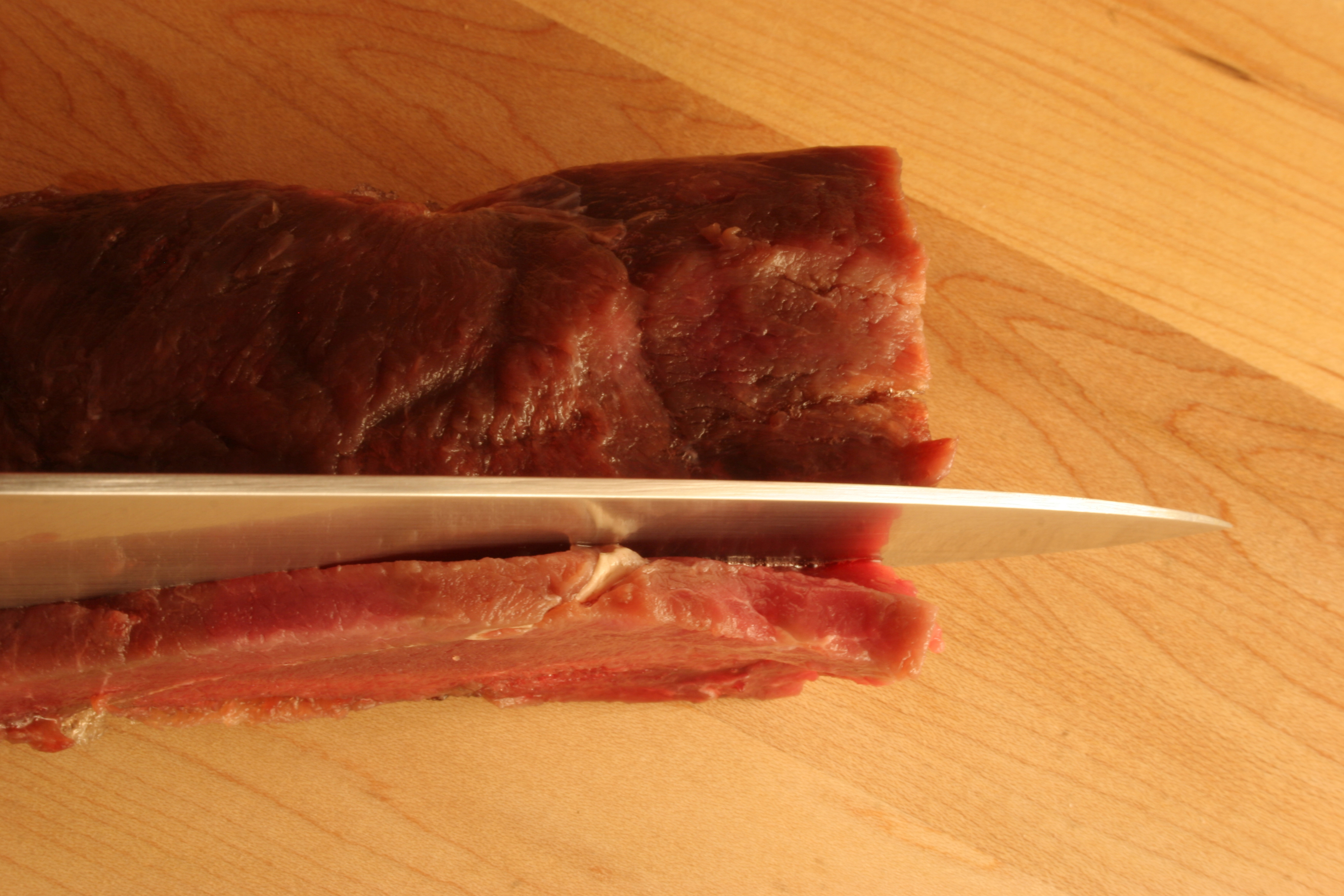Example Article for Rifles and Recipes
Warming The Kitchen - Jerky
Author: Eileen Clarke - Rifles and Recipes
Warming the Kitchen - Jerky
Eileen Clarke
Rifles and Recipes
Winter is a wonderful time to make jerky for several reasons. For one thing, hunting season is all but done. Second, if you’re going to turn the oven on and leave it on a while, winter’s better than summer. Duh. Finally, homemade jerky is a great snack while you relax in the recliner with your feet up watching the best football teams fight it out. (Personally, I’d love to see KC threepeat.)
That brings me to the 100-plus jerky recipes in my book, Stalking the Wild Jerky and this one in particular. Despite the good dose of Worcestershire Sauce and black pepper, this one is kind of subtle with a peppery finish. Two more things: it’s equally good when used on waterfowl slices, and is very close in flavor to most ‘traditionally flavored’ store-bought jerkies without adding any chemical preservatives.
In Stalking the Wild Jerky, the recipe on the previous page unabashedly adds nitrates: that’s what gives store-bought jerky, and commercially prepared jerky ‘spice’ mixes, the reddish color and chemically sweet tang. Perhaps you can’t live without the chemicals and heavy dose of salt, but this recipe (and almost every other recipe in this book) proves you don’t need nitrates to have great jerky flavor.
One more thing: It’s much easier to get uniformly sliced meat if you start slicing while the meat is about ¾ frozen. And having uniform thickness makes timing the cooking much easier.
Honey-Worcestershire Jerky
For 1 pound sliced red meat
Ingredients
1 pound red meat, sliced 1/8 to 1/4 inch thick
½ cup Worcestershire Sauce
¼ cup honey mustard
½ cup honey
2 teaspoons instant beef bouillon granules
1 teaspoon onion powder
1 teaspoon garlic powder
1 teaspoon non-iodized salt
2 teaspoons coarse ground black pepper
Preparation
Once the meat is sliced, pat it dry with paper towels so it’s not drippy when you add it to the marinade--and dilute its flavor. Then mix the rest of the ingredients in a resealable plastic bag, add the meat slices, seal the bag and knead the contents, getting the wet rub all over the meat surfaces. Let sit 48-72 hours in the refrigerator to let the flavor fully develop and tenderize the meat.
Cooking
Preheat the oven to 160°F. Arrange the meat strips on wire mesh grids over a foil-lined pan. Cook at 160°F for 3-4 hours (the time depends on the thickness: ¼” takes 4 hours, thinner less), turn the oven off and let the jerky cool in the closed oven. When done, there should be no pink inside but still be bendable. However, after it cools, you should be able to hold it by one end and not have the strip of jerky sag. Overdone, the jerky gets brittle and cracks and, at the edges the meat is white and thready.
*Worcestershire jerky tends to look undercooked when it’s actually done. So stick with the 3-4 hour cooking time, check for doneness, then let the strips cool in the turned-off oven overnight. Once cool, store the jerky in a resealable plastic bag in the fridge for up to a week. If you’ve multiplied this recipe for a bigger batch, store what you won’t eat right away in the freezer.
Stalking the Wild Jerky with over 100 wild game jerky recipes is now on sale for $17 at Eileen’s website: https://www.riflesandrecipes.com/406-521-0273.
Article Images
Click on Image Thumbnail(s) to view fullsize image
PhotoCredit: Eileen Clark Photo
Image 1 Caption: Slicing for jerky
Eileen Clark Photo
